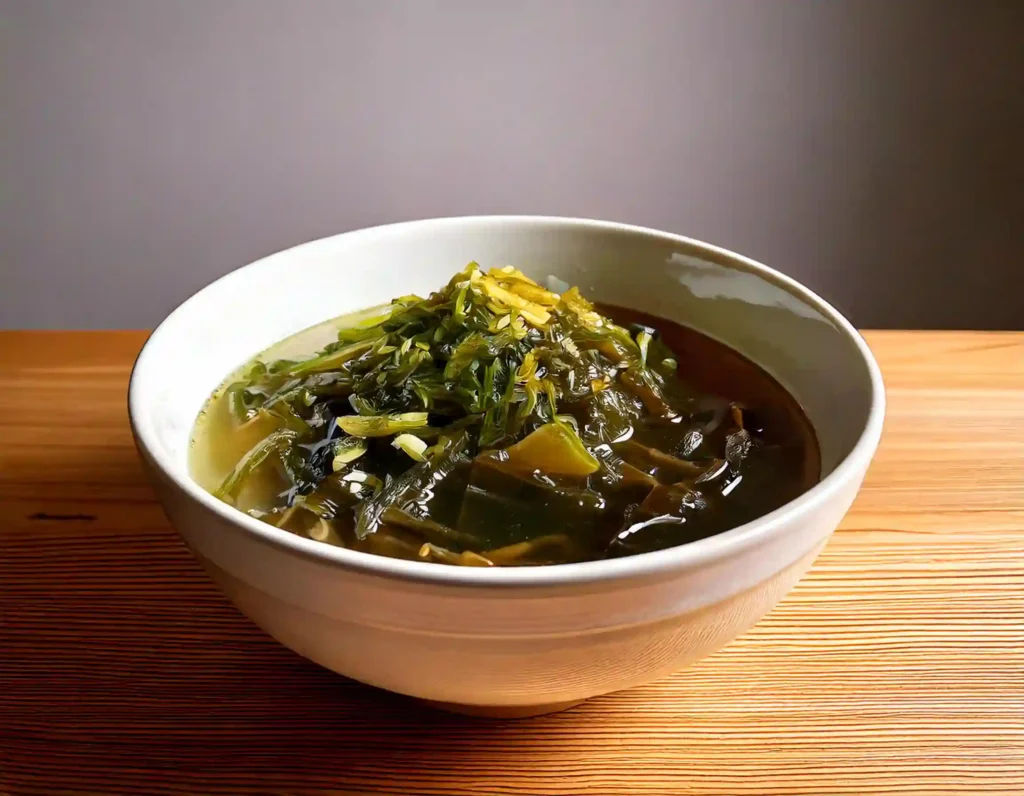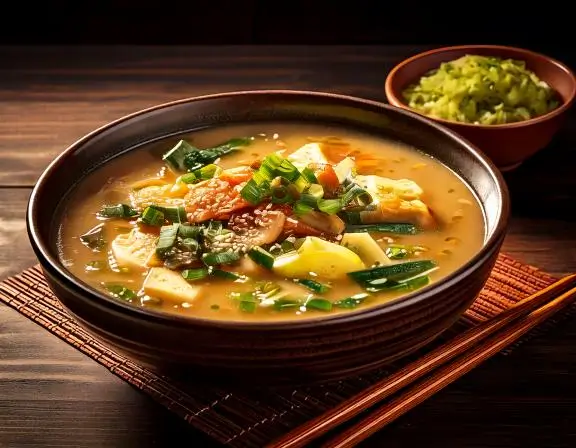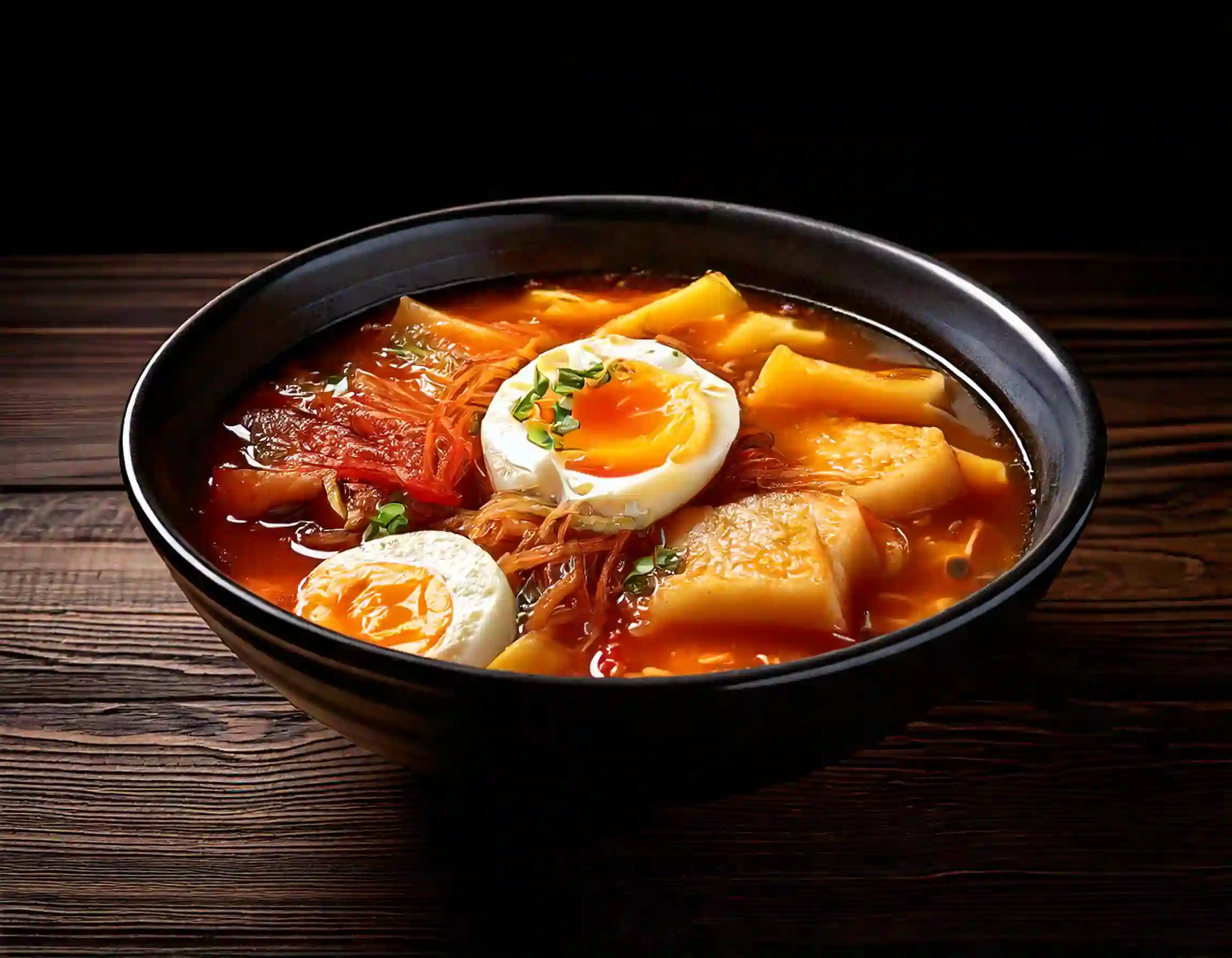What soup do Koreans eat for breakfast? Looking for a warm and nourishing way to begin your day? Discover the soups Koreans enjoy for a delicious and comforting breakfast. Let’s explore these delightful morning traditions.
Koreans often include soup in their morning meal. This provides a warm, comforting start. Many options fit perfectly with a typical Korean breakfast. These soups are not only tasty but also offer nutrients for the day ahead. Therefore, let’s find out what are these delicious Korean breakfast soups.
Exploring Korean Breakfast Soups
When thinking about what Koreans eat for breakfast, soups often come to mind. These are usually lighter than those eaten for dinner. However, they are still flavorful and satisfying. This makes them ideal for a morning meal. Soups vary across regions and households. However, some are popular staples nationwide.
Why Soup is a Breakfast Staple
Soup’s popularity for breakfast in Korea has several reasons. Firstly, a warm bowl is comforting, especially during colder months. Secondly, soups provide hydration and help kickstart the digestion process. Thirdly, these soups are often packed with nutrients from vegetables and proteins. All these qualities make them a great way to start a day. Finally, it’s an easy way to consume a well-balanced meal.
Common Ingredients in Morning Soups
Korean breakfast soups use a variety of fresh and flavorful ingredients. Common vegetables like spinach, radish, and scallions feature prominently. Proteins such as beef, tofu, or eggs are often included too. A light broth, made from anchovies or kelp, forms the base. This approach creates soups that are light yet satisfying for breakfast. Additionally, these soups typically include seasonings. They are often mild, perfect for a gentle morning start.
Popular Korean Breakfast Soups
Several types of soups are commonly enjoyed for breakfast in Korea. Let’s delve into the most popular ones. Each one provides its own unique flavor and nutritional benefits. This provides a variety of choices for a fulfilling morning.

Miyeokguk (Seaweed Soup)
Miyeokguk is a common soup in Korea. It is typically eaten during birthdays and after childbirth. However, it is also a great breakfast choice. The soup features seaweed, which is high in nutrients and minerals. It has a light broth and a slight saltiness. Therefore, it offers a gentle start to the day. It’s a healthy option for a Korean breakfast.
How to Enjoy Miyeokguk
Miyeokguk is quite versatile. It can be eaten as is, or with a side of rice. Some may add a dash of soy sauce for extra flavor. It’s also common to include a small amount of beef or seafood for extra protein. Therefore, this soup can easily be modified to taste. This makes it a suitable option for many preferences. It’s a flexible choice for a quick and healthy breakfast.
Tteokguk (Rice Cake Soup)
Tteokguk is a traditional soup eaten during the Korean New Year. It is also a lovely breakfast option all year round. The soup features sliced rice cakes in a clear broth. It’s often garnished with egg and seaweed. This soup has a subtle flavor and a satisfying texture from the rice cakes. It’s a hearty option for a cooler morning.
Tteokguk’s Variations
The variations of Tteokguk are many. Some families add beef or dumplings for protein. Others prefer a simpler version with just rice cakes and broth. Therefore, it’s an adaptable dish based on what one has available. Regardless of how it’s prepared, it’s a satisfying and nutritious breakfast. It provides the energy to start your day.
Kongnamul Guk (Soybean Sprout Soup)
Kongnamul guk, or soybean sprout soup, is a common breakfast soup in Korea. It is affordable, yet full of flavor and nutrients. The soybean sprouts provide a satisfying crunch. The light and peppery broth is particularly good when you are feeling under the weather. This makes it a refreshing choice for a morning meal.
Kongnamul Guk’s Health Benefits
This soup is quite beneficial for your health, besides being flavorful. Soybean sprouts are a good source of fiber and vitamins. They can aid in digestion. The broth is light. Therefore, it is gentle on your stomach. This soup is a wonderful way to start your day. It combines flavor and health benefits seamlessly.
Doenjangguk (Soybean Paste Soup)

Doenjangguk is a staple soup in Korean cuisine. It’s made from fermented soybean paste. This provides a rich and savory taste. This soup commonly includes tofu, vegetables, and sometimes seafood. It’s a hearty and filling option. Therefore, it makes a great and satisfying breakfast.
How to Make Doenjangguk for Breakfast
Doenjangguk can be made quite fast in the morning. You can use leftover broth or create a fresh one. Just add the paste, vegetables, and tofu. Allow it to simmer for a short period of time. The soup can be adjusted according to preferences, making it a versatile choice for many. This way, you will have a tasty and nutritious breakfast.
Gamjatang (Pork Bone Soup)
While Gamjatang is more often enjoyed as a dinner dish, it is not uncommon to find it for a hearty breakfast, particularly in rural areas or after a night out. This soup, known for its rich and spicy broth and tender pork bones, offers a very satisfying start to the day. It’s a great choice when you’re looking for something filling and flavorful. This soup is a substantial option, which gives a lot of energy.
Enjoying Gamjatang for Breakfast
Gamjatang is packed with potatoes, vegetables, and tender protein. Therefore, it makes a complete meal. It is typically served in a large pot and shared. If using for breakfast, you can opt for a smaller serving. Many Koreans enjoy Gamjatang with a side of rice, which makes it even more satisfying. It’s a flavorful way to start the day, providing a burst of energy.
Other Breakfast Soup Options
Besides the well-known ones, there are other soups which Koreans eat for breakfast. These include Baekseuk (chicken soup) and various light vegetable soups. Each family has its own preferences, leading to a wide variety. The key to a good breakfast soup is to make sure it is flavorful and light. Therefore, it provides a good balance of nutrients. This sets a good start to the day.
Customizing Your Morning Soup
Making your own soup can be a great way to start the day. You can customize it with the vegetables and proteins you like. Adding a dash of chili or herbs can enhance the flavors. Therefore, you can create a soup that is both nutritious and satisfying. This flexible method allows for personalizing your breakfast experience.
The Cultural Significance of Soup in Korean Breakfast
Soup is more than just a meal component in Korean culture. It plays a significant role in daily life. The act of preparing and sharing soup is often a family ritual. It is a show of care. Soups, with their warm and comforting nature, are a reflection of Korean hospitality and tradition. This practice creates a bond amongst family members.
Soup as a Symbol of Comfort
A bowl of warm soup is a symbol of comfort and care. It brings a sense of peace and satisfaction. It is particularly beneficial during colder months or when someone is feeling unwell. This tradition of eating soup, specifically for breakfast, emphasizes its importance in promoting wellness. This demonstrates how a simple bowl can boost the mood.
The Role of Family in Soup Preparation
In many Korean families, preparing soup is a family affair. Recipes are often passed down through generations. This ensures a continuation of traditions. This helps keep the flavors and preferences within the family. It also promotes connection and bonding. Therefore, soup is not just a meal, it is a cultural experience.
Recipe for Simple Korean Breakfast Soup (Miyeokguk)
Here’s an easy recipe for Miyeokguk, a traditional Korean seaweed soup, perfect for breakfast:
Ingredients:
- 1 cup dried seaweed (miyeok)
- 8 cups of water
- 1 tablespoon soy sauce
- 1 teaspoon sesame oil
- ½ teaspoon minced garlic
- Salt to taste
Instructions:
- Soak the Dried Seaweed: Place the dried seaweed in a bowl. Cover with warm water and soak for 20-30 minutes. The seaweed will expand as it soaks.
- Prepare the Seaweed: Once softened, drain the seaweed and rinse it well under cold water. Squeeze out any extra water. Roughly chop the seaweed into smaller, more manageable pieces. This makes it easier to eat in the soup.
- Sauté the Garlic: In a pot, heat the sesame oil over medium heat. Add the minced garlic and sauté for about 30 seconds until fragrant. Take care not to burn the garlic; this will give a bitter taste.
- Add Seaweed and Water: Add the chopped seaweed to the pot. Sauté for about a minute, allowing the seaweed to absorb some flavor from the garlic and sesame oil. Pour in 8 cups of water.
- Simmer the Soup: Bring the soup to a boil, then reduce the heat to low. Let it simmer for about 15-20 minutes. This allows the flavors to blend nicely.
- Season the Soup: Add the soy sauce to the soup. Simmer for another 5 minutes. Season with salt to taste. This allows you to adjust the flavor to suit your preferences.
- Serve Hot: Ladle the soup into bowls and serve hot. This delicious soup is perfect for a comforting breakfast. Enjoy it as is, or alongside a side of rice.
Nutritional Information (per 100g)
| Nutrient | Amount |
| Calories | 30 |
| Total Fat | 1g |
| Saturated Fat | 0.2g |
| Cholesterol | 0mg |
| Sodium | 300mg |
| Total Carbohydrate | 4g |
| Dietary Fiber | 2g |
| Total Sugars | 0.5g |
| Protein | 1g |
Note: Nutritional values are approximate and may vary based on specific ingredients and preparation methods. The soup offers important nutrients and minerals.
Adjusting the Recipe for Dietary Needs
You can adjust the recipe to fit your dietary needs or preferences, and you can add more or less salt, depending on your taste. You can also include different vegetables or proteins. If you are vegetarian, you can skip adding beef or seafood. This way, you can still enjoy the delicious flavor of Miyeokguk.
Tips for Making the Best Miyeokguk
- Use good-quality seaweed. This will improve the overall taste.
- Do not over-soak the seaweed. This can make it too soft.
- Sautéing the garlic and seaweed briefly enhances the flavors.
- Allow the soup to simmer for a good period of time. This will let all flavors blend nicely.
Beyond the Bowl: Complementing Your Korean Breakfast Soup
While the soup is a main element, Korean breakfasts usually feature other side dishes. These compliment the soup, creating a balanced and enjoyable meal. The side dishes, often referred to as “banchan”, can vary based on personal preferences or family traditions. However, they add variety and flavor to the overall experience.
Common Side Dishes
Common side dishes include kimchi (fermented vegetables), seasoned spinach, or a small omelet. These are usually light and flavorful. They add contrast to the soup. In addition, rice is almost always served alongside the soup. This gives a satisfying element to the breakfast. Therefore, the combination creates a complete and nutritious morning meal.
The Balance of Flavors and Textures
A traditional Korean breakfast is all about achieving a good balance of flavors and textures. The warm, soothing soup is counterbalanced by the crispness of the side dishes. The subtle flavors of the rice complement it, creating a pleasing blend of tastes. This meal provides a great start to the day.
Adapting for Western Tastes
If you are not used to eating soup for breakfast, you may consider starting with a lighter soup option. You can also adjust the spice levels. This makes it more suitable for your taste buds. By slowly introducing these flavors, you can adapt your palate to enjoy the warmth and nutrients that Korean breakfast soups offer.
Conclusion
Koreans often eat soup for breakfast because it’s a warm, nourishing, and easy way to start the day. Many types of soups, from seaweed soup to soybean sprout soup, offer unique flavors and nutrients. Therefore, if you are looking for a delightful morning meal, you must try these soups. They are a good start to the day. Enjoy exploring these delicious Korean breakfast soups and see how they enhance your mornings.
FAQ:
What is a typical breakfast in Korea?
A typical Korean breakfast, generally, includes rice, soup, a few side dishes (banchan), and sometimes eggs. Furthermore, the meal is balanced and provides a variety of flavors and nutrients. Chiefly, soup is a central element of breakfast meals.
Do Koreans almost always eat soup at breakfast along with rice?
Yes, indeed, soups are a very common component of breakfast in Korea. Specifically, they are often eaten with rice. Consequently, this combination provides warmth, hydration, and nutrients. Therefore, this makes for a satisfying meal.
What is popular soup in Korea?
Popular soups in Korea, especially, include Miyeokguk (seaweed soup), Tteokguk (rice cake soup), Kongnamul Guk (soybean sprout soup), and Doenjangguk (soybean paste soup). Notably, each soup has unique flavors and nutrients. Altogether, they are all a good option for breakfast.
Do Koreans eat soup everyday?
Many Koreans, in fact, eat soup almost daily, including at breakfast. Basically, soups are a staple of Korean cuisine. Moreover, they are part of many meals. Undoubtedly, they are chosen for their beneficial health properties and flavors.

